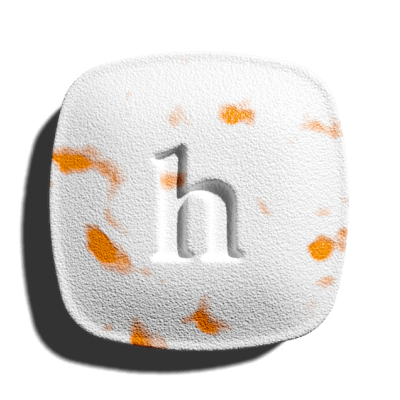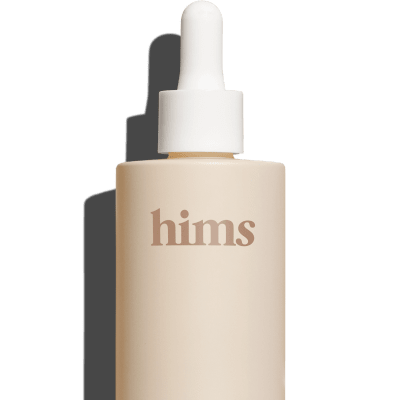Content
Over 90% of users saw increased regrowth or reduced hair loss in clinical trials
Finasteride Dose for Hair Loss

The treatment options for thinning hair or hair loss can seem endless and overwhelming. Plenty of hair loss treatment products promise amazing results, but there are relatively few medications that have FDA approval and a well-established record of being safe and effective for most users.
Among that select group is finasteride, a medication that’s available in oral tablets and topical sprays and serums. Finasteride is from a class of medicines called alpha-5 reductase inhibitors. Finasteride works on the hormones that cause male pattern hair loss; specifically, it targets the alpha-5 reductase enzyme to help prevent the conversion of testosterone into dihydrotestosterone (DHT).
DHT can not only interfere with healthy hair growth, especially as you get older, but it can also lead to an enlarged prostate, a condition known as benign prostatic hyperplasia (BPH). High DHT levels are also associated with a higher risk of prostate cancer. Finasteride (sold for BPH under the brand name Proscar) may help slow or reverse prostate enlargement and treat some BPH symptoms. A urologist or your primary care doctor should be able to advise you whether you should take finasteride for prostate health.
As for the treatment of male pattern hair loss, it’s important to talk with a dermatologist or other healthcare provider who specializes in hair regrowth and hair restoration. Finasteride may not be right for everyone, but with solid medical advice, you can determine whether it’s something you want to try and what dose will be safe and effective for you.
Content
Do You Need Finasteride?
Finasteride is used to treat androgenetic alopecia, better known as male pattern baldness. Men with androgenetic alopecia have higher DHT levels in their scalp and smaller hair follicles. If you are among the men dealing with androgenetic alopecia, you are in good company: An estimated 30% to 50% of adult men experience male pattern baldness.
If you currently have a healthy head of hair, taking finasteride to help prevent male pattern hair loss may not be worth it, and it may not be effective. Hair loss, including a receding hairline, isn’t always the result of too much DHT. Certain genetic factors may predispose you to premature hair loss. The same is true for certain hair styling practices or harsh hair products. Finasteride may not be effective for hair loss unrelated to DHT levels.
more hair... there's a pill for that
The recommended oral finasteride dose for hair loss, according to the FDA, is a 1 milligram tablet. For best results, finasteride tablets should be taken daily. Ideally, you should take the medication at about the same time every day. It can be taken with or without food.
Topical finasteride products include sprays and serums that are worked into the scalp to stimulate new hair growth in existing hair follicles. One study found that a 0.25% topical solution of finasteride applied just once a day was effective at improving hair count compared to a placebo, and was well-tolerated.
Topical finasteride is especially effective when used in combination with minoxidil, a medication that helps restore hair loss as a result of inherited male pattern baldness. For people who don’t like taking pills, topical finasteride may be a better option.
Missing an occasional dose of finasteride shouldn’t be problematic. Rather than take the medication as soon as you remember, let it go and simply resume taking finasteride at your next scheduled time and resume your usual medication regimen. Taking too much finasteride could lead to potentially serious side effects and complications.
Finasteride is available through prescription only. There is not yet an over-the-counter version of the medication.
Oral finasteride is usually available in 1 mg tablets to treat hair loss. For BPH, your doctor may prescribe a 5 mg tablet. A 5 mg tablet is not recommended for treating hair loss. Generic finasteride and the brand medication (Propecia) are sold in 1 mg tablets.
Topical finasteride should be applied in small amounts to the scalp follicles experiencing hair loss. You don’t need to apply more than is needed, especially in areas with healthy hair growth.
Choosing oral or topical finasteride may come down to personal preference. A 2022 study in the Journal of Dermatological Treatment found that individuals who took oral finasteride saw similar hair growth compared with those who used the topical version.
Will you join thousands of happy customers?
4.5 average rating
Side Effects
Finasteride is generally well-tolerated by most people. You may be able to take it safely for months or years and experience robust hair growth without any problems. However, new hair growth that occurs after you start finasteride may be lost within a year or so after stopping the medication.
And like any powerful medication, finasteride can cause some potentially serious side effects.
Oral finasteride, in particular, can produce some unwanted side effects, such as:
Chills
Cold sweats
Dizziness and/or lightheadedness
Less common side effects can include bloating, weight gain, or swelling in the face, hands, and elsewhere in the body. Hives, redness, or other skin rashes may also develop.
Finasteride may also cause erectile dysfunction and a reduced sex drive. You may also notice less ejaculation volume, though these side effects often fade as your body gets used to the medication. While there is little research on the topic, you may find that taking a lower dose may still restore hair growth while reducing the severity of side effects.
If you experience adverse effects with oral finasteride, you may want to try the topical version. Research suggests that men who make that switch still experienced desired improvements in hair density without the side effects. Using a combination of finasteride and minoxidil also proved to be especially helpful with hair regrowth.
Some drug interactions involving finasteride and other prescription medications or supplements are possible, so be sure to consult your healthcare provider or a pharmacist to avoid any adverse effects or complications. It’s always smart to keep your doctor updated with all the medications and supplements you take.
Hair loss treatments, delivered
While you may be especially anxious to restart hair growth in a hurry, keep in mind that finasteride is not an overnight solution. Hair growth takes time. The effects of finasteride may take three or four months to produce the results you want.
Everyone’s hair growth timeline is different, of course, but if you don’t see results within 12 months, that may be a sign that the medication isn’t going to help, and you may want to consider other hair restoration options.
Keep in mind that finasteride doesn’t lead to a complete reduction of DHT levels, but it can often be effective in slowing and reversing some hair loss.
7 Sources
- Asfour, L., et al. (2023). Male Androgenetic Alopecia. https://www.ncbi.nlm.nih.gov/books/NBK278957/
- Chandrashekar, B., et al. (2015). Topical minoxidil fortified with finasteride: An account of maintenance of hair density after replacing oral finasteride. https://www.ncbi.nlm.nih.gov/pmc/articles/PMC4314881/
- Food and Drug Administration. (2012). PROPECIA® (finasteride) tablets for oral use. https://www.accessdata.fda.gov/drugsatfda_docs/label/2012/020788s020s021s023lbl.pdf
- Gupta, A., et al. (2022). Finasteride for hair loss: a review. https://pubmed.ncbi.nlm.nih.gov/34291720/
- National Library of Medicine. (2022). Finasteride. https://medlineplus.gov/druginfo/meds/a698016.html
- Piraccini, B., et al. (2022). Efficacy and safety of topical finasteride spray solution for male androgenetic alopecia: a phase III, randomized, controlled clinical trial.
- https://www.ncbi.nlm.nih.gov/pmc/articles/PMC9297965/
Editorial Standards
Hims & Hers has strict sourcing guidelines to ensure our content is accurate and current. We rely on peer-reviewed studies, academic research institutions, and medical associations. We strive to use primary sources and refrain from using tertiary references. See a mistake? Let us know at [email protected]!
This article is for informational purposes only and does not constitute medical advice. The information contained herein is not a substitute for and should never be relied upon for professional medical advice. Always talk to your doctor about the risks and benefits of any treatment. Learn more about our editorial standards here.
Knox Beasley, MD
Dr. Knox Beasley is a board certified dermatologist specializing in hair loss. He completed his undergraduate studies at the United States Military Academy at West Point, NY, and subsequently attended medical school at Tulane University School of Medicine in New Orleans, LA.
Dr. Beasley first began doing telemedicine during his dermatology residency in 2013 with the military, helping to diagnose dermatologic conditions in soldiers all over the world.
Dr. Beasley is board certified by the American Board of Dermatology, and is a Fellow of the American Academy of Dermatology.
Originally from Nashville, TN, Dr. Beasley currently lives in North Carolina and enjoys spending time outdoors (with sunscreen of course) with his wife and two children in his spare time.
Education
Bachelor of Science, Life Sciences. United States Military Academy.
Doctor of Medicine. Tulane University School of Medicine
Training
Dermatology Residency. San Antonio Uniformed Services Health Education Consortium
Certifications
Board Certified. American Board of Dermatology
Publications
Wilson, L. M., Beasley, K. J., Sorrells, T. C., & Johnson, V. V. (2017). Congenital neurocristic cutaneous hamartoma with poliosis: A case report. Journal of cutaneous pathology, 44(11), 974–977. https://onlinelibrary.wiley.com/doi/10.1111/cup.13027
Banta, J., Beasley, K., Kobayashi, T., & Rohena, L. (2016). Encephalocraniocutaneous lipomatosis (Haberland syndrome): A mild case with bilateral cutaneous and ocular involvement. JAAD case reports, 2(2), 150–152. https://www.ncbi.nlm.nih.gov/pmc/articles/PMC4867906/
Patterson, A. T., Beasley, K. J., & Kobayashi, T. T. (2016). Fibroelastolytic papulosis: histopathologic confirmation of disease spectrum variants in a single case. Journal of cutaneous pathology, 43(2), 142–147. https://onlinelibrary.wiley.com/doi/10.1111/cup.12569
Beasley, K., Panach, K., & Dominguez, A. R. (2016). Disseminated Candida tropicalis presenting with Ecthyma-Gangrenosum-like Lesions. Dermatology online journal, 22(1), 13030/qt7vg4n68j. https://pubmed.ncbi.nlm.nih.gov/26990472/
Kimes, K., Beasley, K., & Dalton, S. R. (2015). Eruptive milia and comedones during treatment with dovitinib. Dermatology online journal, 21(9), 13030/qt8kw141mb. https://pubmed.ncbi.nlm.nih.gov/26437285/
Miladi, A., Thomas, B. C., Beasley, K., & Meyerle, J. (2015). Angioimmunoblastic t-cell lymphoma presenting as purpura fulminans. Cutis, 95(2), 113–115. https://pubmed.ncbi.nlm.nih.gov/25750965/
Beasley K, Dai JM, Brown P, Lenz B, Hivnor CM. (2013). Ablative Fractional Versus Nonablative Fractional Lasers – Where Are We and How Do We Compare Differing Products?. Curr Dermatol Rep, 2, 135–143. https://idp.springer.com/authorize?response_type=cookie&client_id=springerlink&redirect_uri=https%3A%2F%2Flink.springer.com%2Farticle%2F10.1007%2Fs13671-013-0043-0
Siami P, Beasley K, Woolen S, Zahn J. (2012). A retrospective study evaluating the efficacy and tolerability of intra-abdominal once-yearly histrelin acetate subcutaneous implant in patients with advanced prostate cancer. UroToday Int J, June 5(3), art 26. https://www.urotoday.com/volume-5-2012/vol-5-issue-3/51132-a-retrospective-study-evaluating-the-efficacy-and-tolerability-of-intra-abdominal-once-yearly-histrelin-acetate-subcutaneous-implants-in-patients-with-advanced-prostate-cancer.html
Siami P, Beasley K. (2012). Dutasteride with As-Needed Tamsulosin in Men at Risk of Benign Prostate Hypertrophy Progression. UroToday Int J, Feb 5(1), art 93. https://www.urotoday.com/volume-5-2012/vol-5-issue-1/48691-dutasteride-with-as-needed-tamsulosin-in-men-at-risk-of-benign-prostatic-hypertrophy-progression.html





